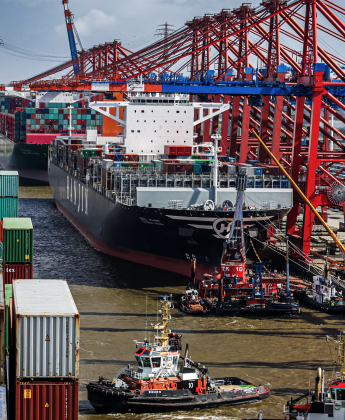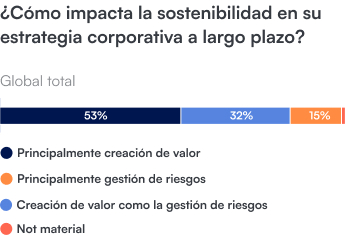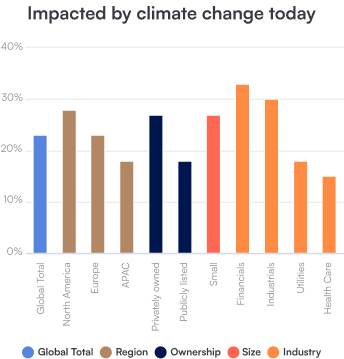Communication from the FED: Amplifier or damper of the volatility of expectations?

This year, a differentiated dynamic is expected in the behavior of the main Latin American economies. On the one hand, after registering a much greater expansion than initially planned in 2023, the two largest economies in the region will experience a slowdown this year. In the case of Brazil, after a growth of 2.8% last year, we foresee a modest expansion of 1.3% in 2024, amid the effects of the El Niño phenomenon (FEN), interest rates that remain high and a new increased fiscal uncertainty. On the other hand, while the greater optimism generated by nearshoring and high public spending in an election year will allow the Mexican GDP to expand a still healthy 2.7% this year, this figure represents a moderation compared to the 3.1% in 2023, considering the impact of restrictive monetary policy on activity and slowdown in the United States.
On the contrary, the Andean economies will tend to gain speed. In the case of Chile, after presenting a contraction of 0.2% last year amid a necessary adjustment of private consumption - which had grown unsustainably in previous years -, we calculate an expansion of 2.1% in 2024, in the extent to which domestic demand responds favorably to the important process of reducing the monetary policy rate and the sharp decline in inflation, while, gradually, new investment projects begin to be executed in the face of less political uncertainty. For its part, Colombia would accelerate slightly, from 1.2% in 2023 to 1.7% in 2024, as the adjustment of private consumption comes to an end, the expected reduction in inflation and interest rates provide greater support to internal demand, and there is greater execution of public spending in the second year of Petro's government.
The Peruvian economy will present a rebound after the recession observed in 2023 (estimated drop in GDP of 0.5%), amidst the fading of the adverse effects caused by social protests and the climatic events of the first half of last year, of the expectation of greater public spending by subnational governments in their second year of administration and of a gradual recovery of private investment, especially mining. In fact, it is worth noting that the materialization of a weak FEN significantly reduces the risks to the economy, and GDP growth of more than 2.5% this year cannot be ruled out. Added to this are favorable expectations for the price of copper.
All in all, the Andean economies are once again gaining the attention of the markets with the case of Peru being relevant, as it is highly likely that it will show the highest growth rate among the main economies in the region, at least in 2024. The key will be that this can be sustained over time and that it is not a matter of a single year, for which greater political stability, an improvement in business confidence and pro-growth reforms are key.

This year, a differentiated dynamic is expected in the behavior of the main Latin American economies. On the one hand, after registering a much greater expansion than initially planned in 2023, the two largest economies in the region will experience a slowdown this year. In the case of Brazil, after a growth of 2.8% last year, we foresee a modest expansion of 1.3% in 2024, amid the effects of the El Niño phenomenon (FEN), interest rates that remain high and a new increased fiscal uncertainty. On the other hand, while the greater optimism generated by nearshoring and high public spending in an election year will allow the Mexican GDP to expand a still healthy 2.7% this year, this figure represents a moderation compared to the 3.1% in 2023, considering the impact of restrictive monetary policy on activity and slowdown in the United States.
All in all, the Andean economies are once again gaining the attention of the markets with the case of Peru being relevant, as it is highly likely that it will show the highest growth rate among the main economies in the region, at least in 2024. The key will be that this can be sustained over time and that it is not a matter of a single year, for which greater political stability, an improvement in business confidence and pro-growth reforms are key.

This year, a differentiated dynamic is expected in the behavior of the main Latin American economies. On the one hand, after registering a much greater expansion than initially planned in 2023, the two largest economies in the region will experience a slowdown this year. In the case of Brazil, after a growth of 2.8% last year, we foresee a modest expansion of 1.3% in 2024, amid the effects of the El Niño phenomenon (FEN), interest rates that remain high and a new increased fiscal uncertainty. On the other hand, while the greater optimism generated by nearshoring and high public spending in an election year will allow the Mexican GDP to expand a still healthy 2.7% this year, this figure represents a moderation compared to the 3.1% in 2023, considering the impact of restrictive monetary policy on activity and slowdown in the United States.
All in all, the Andean economies are once again gaining the attention of the markets with the case of Peru being relevant, as it is highly likely that it will show the highest growth rate among the main economies in the region, at least in 2024. The key will be that this can be sustained over time and that it is not a matter of a single year, for which greater political stability, an improvement in business confidence and pro-growth reforms are key.

Active prevention: PLAFT Commitment
We fight against financial crimes, money laundering and the financing of terrorism: This is how we contribute to the stability of the financial system and the integrity of the markets.
This year, a differentiated dynamic is expected in the behavior of the main Latin American economies. On the one hand, after registering a much greater expansion than initially planned in 2023, the two largest economies in the region will experience a slowdown this year. In the case of Brazil, after a growth of 2.8% last year, we foresee a modest expansion of 1.3% in 2024, amid the effects of the El Niño phenomenon (FEN), interest rates that remain high and a new increased fiscal uncertainty.

On the contrary, the Andean economies will tend to gain speed. In the case of Chile, after presenting a contraction of 0.2% last year in the midst of a necessary adjustment of private consumption - which had grown unsustainably in previous years -, we calculate an expansion of 2.1% in 2024, in the extent to which domestic demand responds favorably to the important process of reducing the monetary policy rate and the sharp decline in inflation, while, gradually, new investment projects begin to be executed in the face of less political uncertainty. For its part, Colombia would accelerate slightly, from 1.2% in 2023 to 1.7% in 2024, as the adjustment of private consumption comes to an end, the expected reduction in inflation and interest rates provide greater support to internal demand, and there is greater execution of public spending in the second year of Petro's government.
This year, a differentiated dynamic is expected in the behavior of the main Latin American economies. On the one hand, after registering a much greater expansion than initially planned in 2023, the two largest economies in the region will experience a slowdown this year. In the case of Brazil, after a growth of 2.8% last year, we foresee a modest expansion of 1.3% in 2024, amid the effects of the El Niño phenomenon (FEN), interest rates that remain high and a new increased fiscal uncertainty.

